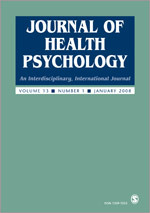A theoretical approach to understanding HPV vaccine beliefs
 I’m a theory nerd at heart. In my opinion theory is the foundation of all scientific knowledge. After I had the opportunity to publish the main findings from a small pilot study of HPV vaccine related attitudes and beliefs among a sample of young gay and bisexual men, I had to go back to the data and give it another look–a look through the eyes of health behavior theory! The main findings were published in a journal primarily focusing on a biomedical/epidemiology audience. They wouldn’t appreciate an extended narrative on the redundancy of key constructs from intrapersonal level health behavior theories. Something I could talk all day about! Of course I was limited by the cross-sectional research design (one day I’ll have the funding for longitudinal data collection!). But I made the best out of the data I had.
I’m a theory nerd at heart. In my opinion theory is the foundation of all scientific knowledge. After I had the opportunity to publish the main findings from a small pilot study of HPV vaccine related attitudes and beliefs among a sample of young gay and bisexual men, I had to go back to the data and give it another look–a look through the eyes of health behavior theory! The main findings were published in a journal primarily focusing on a biomedical/epidemiology audience. They wouldn’t appreciate an extended narrative on the redundancy of key constructs from intrapersonal level health behavior theories. Something I could talk all day about! Of course I was limited by the cross-sectional research design (one day I’ll have the funding for longitudinal data collection!). But I made the best out of the data I had.
The target of this analysis was really my all time favorite construct–perceived threat. I could read entire books about this one construct, its psychological underpinnings, and of course the sociology of risk itself (I took an entire class on this subject). The explanatory power of perceived threat is often called into question because of low correlations with behavior or behavioral intention. Of course many researchers model constructs from the Health Belief Model as independent predictors thus ignoring the indirect or mediated relationships among the constructs.
I was particularly interested in previous work by Neff and Crawford who found that criterion specific beliefs (e.g., perceived benefits and barriers to HIV risk reduction) mediated the relationships between perceived susceptibility/severity of HIV and HIV risk behavior. It makes perfect sense that the saliency of beliefs regarding a preventive health behavior would vary according to an individual’s perception of a specific health threat. This is about information processing (See the Heuristic-systematic model). Those with high perceived threat of HPV are motivated to systematically process information about HPV prevention and are therefore more likely to focus on the benefits of those preventive behaviors while minimizing the barriers. Ultimately all this is in the HBM already. The recommended paths to action (e.g., perceived benefits/ barriers) will mediate the relationships between modifying (e.g, knowledge) and motivational factors (e.g., threat) and behavior (or behavioral intention). The problem is these structural relationships aren’t clearly explained or theorized in many iterations of the HBM. Long story short, these relationships were the focus of the manuscript we published in the Journal of Health Psychology. If you find all this interesting please give it a read. The abstract is copied below for your convenience.
In this study, we examined the structural relationships among constructs from the Health Belief Model as they relate to human papillomavirus vaccine intentions in young gay and bisexual men in the United States (N = 183). A model was identified that fit the data well and accounted for 56% of the variance in vaccine intentions. Perceived benefits and barriers were the most proximate predictors of intentions, whereas knowledge and perceived threat exerted only indirect influence. Clarifying the propositional structures within the Health Belief Model can help to advance our understanding of human papillomavirus–related cognitions and behaviors and inform vaccine promotion programs.